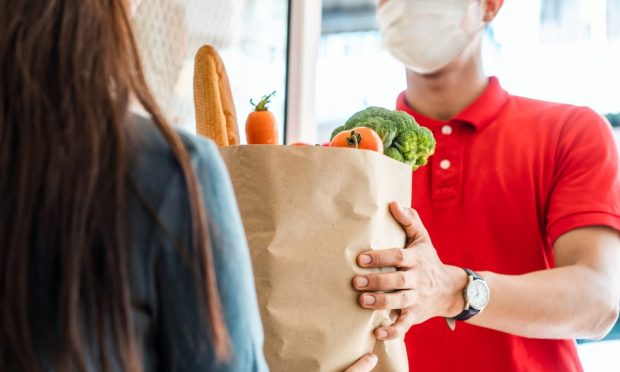Online Grocery Adoption Rises 5% in March, PYMNTS Data Reveal

Most consumers may be paring back their spending to stick to the essentials, but an increasing number nevertheless are proving willing to pay the premium for convenience when it comes to buying groceries.
Online grocery adoption is on the rise, according to data from PYMNTS’ April study, “ConnectedEconomy™ Monthly Report: 3 Ways Consumers Are Dealing With Inflation.” The report, which drew from a March survey of more than 2,800 U.S. adults, found that 31.6% of consumers reported ordering groceries online that month, up 4.9% from February.
Read more: 6 in 10 Consumers Buying Only the Essentials as Inflation Rises
Perhaps unsurprisingly given the delivery and convenience fees that are typically associated with the channel, consumers who are less conservative in their spending are the most likely to purchase from eGrocers. The study found that 61% of all U.S. consumers are shopping mostly for basic essentials, 10% of the population is living large (spending more freely, with major purchases including big-ticket items), 23% splurge occasionally on smaller items, and the remaining handful of consumers are “don’t need much” shoppers — those who have not made retail purchases of any kind in the past month other than groceries.
In fact, the study found that 55% of consumers who live large receive a grocery or meal kit subscription on a regular basis, 61% bought groceries online for delivery in March, 67% bought online for curbside pickup, and 58% used a same-day delivery aggregator such as Instacart. In contrast, only 18% of consumers who don’t need much received a grocery or meal kit subscription, 25% purchased online for delivery, 16% for curbside pickup, and 22% from an aggregator.
Notably, while big spenders’ adoption of online grocery delivery and curbside pickup options rose in March, their adoption of grocery and meal kit subscription services and of aggregators actually fell. Meanwhile, consumers who do not need much’s adoption of all online grocery channels except curbside pickup rose during the month.
Where initial adoption of online grocery options may have been motivated by pandemic-related concerns, the space has continued to grow even as these anxieties have subsided.
“COVID brought in some online ordering from demographics, particularly some of the boomers who in the past have not been as oriented around online shopping, particularly for groceries,” Debbie Guerra, executive vice president of on-demand merchant solutions at ACI Worldwide, told PYMNTS in a December interview. “We’ve seen, with the millennials, the Gen-Zers, that they were already eager to continue to adopt digital payments. What has happened, though, is that as COVID continued, the ongoing shift to digital has become embedded.”
See more: Supermarkets Rethink Physical and Digital Aisles for Grocery’s Connected Future
Moreover, online grocery is growing smarter.
“[There’s now] the expectations that your online grocer understands you, the expectation that they save you time, the expectation that the next time you come there, they’re able to really offer you a better reflection of what you need, as opposed to the same patterns that you would see in a physical grocery store,” Alex Weinstein, chief digital officer at online grocer Hungryroot, told PYMNTS in a January interview. “If in 2020 the typical purchasing pattern was going to your online grocery destination and pressing the reorder button, today consumers want more. They want variety. They want recommendations.”
Read more: eGrocery Customers Expect More Than Digital Shelves; They Expect Personal Relationships
